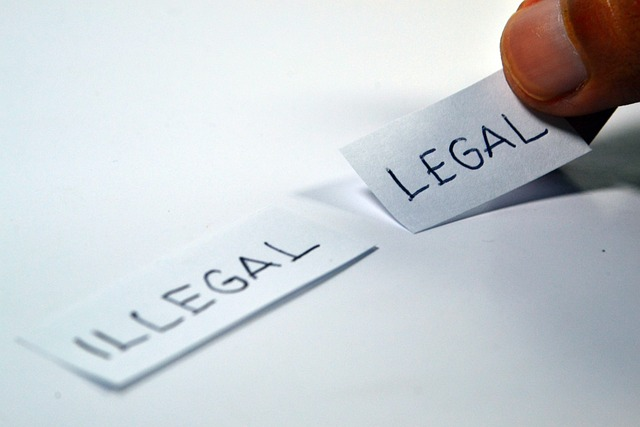The California Law for A Divorce
California Law for Filing

One spouse (the petitioner) files a Petition for Dissolution of Marriage and serves the other spouse (the respondent). California has no-fault divorce, so no grounds must be established. The only requirements are that one spouse has lived in California for the past 6 months and in the county of filing for the past 3 months.
When initiating divorce under California laws for divorce, the spouse seeking to dissolve the marriage files a Petition for Dissolution with the superior court in their county of residence. This legal document names the parties, provides basic information about the marriage, and formally requests the court to end the marital status. Since California enacted the nation’s first no-fault divorce law in 1970, the petition does not allege traditional fault grounds like adultery or abandonment. Rather, it simply declares irreconcilable differences have irreparably damaged the marriage.
To establish proper jurisdiction in their local county, the filing spouse must have physically resided within California for at least 6 months and within said county for a minimum of 3 months prior to petitioning. Consulting with an experienced family law attorney ensures your divorce petition accurately sets forth the essential facts and requests necessary to legally commence the dissolution process. The attorney can also advise you on California’s laws for divorce residency requirements and arrange proper service of the petition on your spouse. With legal guidance, individuals can take the first step toward a smooth and favorable divorce.
An attorney’s assistance with the initial petition can set the tone for amicable, fair proceedings focused on quickly ending the marriage with minimal emotional and financial costs. We have extensive experience in no-fault dissolutions and can help you get started on the right foot.
Initiating A California Law for Divorce Complaint

When initiating a divorce in California, the spouse seeking to end the marriage files a Petition for Dissolution with the superior court in the county where they reside. This petition sets forth basic information about the marriage and requests the court to dissolve the marital status. California was the first U.S. state to introduce no-fault divorce in 1970, so the petition does not need to allege fault-based grounds like adultery or abandonment.
The petitioning spouse simply states irreconcilable differences have caused an irremediable breakdown of the marriage. To file locally, they must have physically resided in California for at least 6 months and within the county of filing for at least 3 months prior. An experienced family law attorney can advise on jurisdiction rules and ensure your divorce petition accurately sets forth the essential facts and requests to begin the legal process.
Responding A California Law for Divorce Petition

The respondent has 30 days to file a Response, agreeing or disagreeing with the petition’s statements. Not responding can result in a default judgment. The respondent can also file their own divorce petition.
The spouse served with dissolution papers is referred to as the respondent and has 30 calendar days to file a Response with the court. This required legal filing indicates whether they agree or disagree with the information and requests made in the petition. Not submitting a Response could result in a default judgment against the respondent is critical under California law for divorce processes.
Legal Help

An attorney can help the respondent carefully review the petition’s statements and determine if additional relevant facts should be included. For example, if the petition misstates income, omits assets, or makes incorrect claims about custody. A response allows the respondent to correct the record. They could also file their own counter-petition to initiate the divorce. With an attorney’s counsel, the respondent can craft a thoughtful Response to progress the case favorably.
Temporary Orders: In California Law Divorce Process
Either party can request temporary orders for child custody, visitation, child and spousal support, payment of debts, and other matters while the divorce is pending. The court will determine temporary orders based on need.
Given divorce can take 9 months or more, temporary orders allow either party to request near-term relief to address urgent needs before the final judgment. For couples with children, custody, visitation, and child support orders provide stability while the parents resolve permanent arrangements. Temporary spousal support may be awarded to a financially dependent spouse. The court can also issue orders regarding payment of debts, control of assets, and exclusive use of a home or car.
Requests require filing a motion and showing need. At a hearing, the judge considers factors like income disparity, living expenses, marital standard of living, and best interests of children. Attorneys help assemble supporting evidence. Temporary orders are not binding long-term but rather maintain the status quo during divorce proceedings. An experienced lawyer can advise on seeking favorable temporary orders.
Discovery and Documentation
What is Discovery
Parties exchange financial declarations detailing all assets, debts, incomes, and expenses. Tax returns, bank/credit card statements, retirement account info, real estate appraisals, and other documentation may also be requested and shared during discovery.
The discovery process involves mandatory disclosure by both spouses of all relevant financial information to divide the marital estate equitably. Initial disclosures list all separate and community property assets and debts with values and account numbers. Income, expenses, tax returns, pay stubs, deeds, retirement, and investment accounts must also be revealed and documented.
Important. Documentation
Broad discovery rights allow each party to subpoena records, take depositions, demand valuations, and otherwise investigate finances for transparency. This may include appraisals of real estate, business interests, or collectibles.
Forensic accountants analyze records to trace commingled assets or identify hidden income. Failing to disclose assets is illegal and can undermine settlements. With attorney guidance, individuals can navigate discovery obligations and gain knowledge critical to informed divorce negotiations.
California Law for Divorce – Settlement Negotiations
Most divorces settle out of court through mediation, collaboration, or attorneys negotiating. Settlement agreements divide property and address child-related issues like custody, visitation, and support. Courts must approve agreements to finalize a divorce.
Reaching a negotiated settlement agreement is the most common way to finalize divorce terms without a lengthy court trial. Alternative dispute resolution options like mediation and collaborative divorce can facilitate productive discussions between parties to mutually determine property division, spousal support, and child-related decisions.
More often, family law attorneys negotiate these agreements on their client’s behalf through back-and-forth communication and creative problem-solving. Settlements must conform to state laws and be approved by the court as fair and equitable before officially dissolving the marriage.
Contested Divorce Trial
If a settlement isn’t reached, the case goes to trial. Lawyers present evidence on disputed issues, and the judge makes final decisions on all matters including property division, support, custody, etc.
If productive negotiations fail and key disputes remain, the case will proceed to a contested divorce trial. Family law attorneys will then engage in discovery and preparation to prove contested facts and legal arguments before a judge.
Contested Divorce Process
This may involve taking depositions, retaining forensic experts, gathering evidence, and researching case law precedents. During the trial itself, lawyers will vigorously argue their positions on property characterization and division, spousal and child support amounts, custody arrangements, and any other unresolved issues. After both sides present their case, the judge will weigh the evidence and legal factors at hand to issue final rulings on all matters the parties could not settle out of court.
California Law for Divorce- Final Judgment
Once property and support are divided per an approved settlement or court order, a final judgment of dissolution or divorce is entered, legally ending the marriage. The process usually takes 9-12 months.
Final Legalities As Your New Life Begins
The final step in the divorce process is an entry of judgment formally ending the marital status. Once all issues are resolved – either through a mutually negotiated settlement agreement or by court rulings after trial – a final judgment of dissolution or divorce will be entered. This legally terminates the marriage and implements the property division, support obligations, custody arrangements, name changes, or other terms set forth.
In California, contested divorces typically take 9-12 months to complete from start to final judgment. An experienced attorney can help realistically estimate timing based on your circumstances.
Post-judgment Modifications and Enforcement
Court orders can be modified later if circumstances change significantly. Child support orders are easily modifiable while spousal support and property division changes require substantial justification. Courts enforce compliance with all orders.
After a divorce, circumstances sometimes warrant revisiting prior rulings to modify support or custody orders. Requests require demonstrating a significant material change in circumstances since the order. Child support is relatively easy to modify by updating financials and recalculating.
Compliance and Enforcement of Court-Ordered Divorce Agreements
Altering spousal support or property division requires substantial justification. Separately, courts enforce compliance with all existing community property division, support, visitation, and other orders. An attorney can help craft strong legal arguments to modify terms when appropriate and enforce current ones benefiting you and your children.
Consult a Divorce Attorney

California Law for Divorce Benefits Include:
– Guidance on California Laws and Procedures – Divorce laws vary by state and are complex. A local attorney knows specific statutes and precedents that will apply to your case.
– Protecting Your Rights and Interests – An attorney vigorously advocates for favorable terms for you regarding property, support, custody, and other critical divorce matters.
– Handling Legal Paperwork – Attorneys ensure all petitions, filings, declarations, disclosures, and other documents follow proper legal protocols.
– Providing Objectivity – Lawyers remove emotions and provide reasoned advice and pragmatic expectations on likely outcomes.
– Knowledge of Local Courts and Judges – Experienced divorce attorneys understand unwritten local rules and predilections of judges when advising clients strategically.
– Facilitating Settlements – Skilled negotiators work to settle cases in your favor without expensive contested litigation when possible.
– Strong Courtroom Advocacy – If settlement fails, attorneys have trial experience fighting for your best interests before a judge.
– Enforcing Orders and Modifying Terms – Lawyers help enforce compliance with divorce terms benefiting you and modify orders when circumstances substantially change.
Conclusion
There are many complex emotional and legal issues in dissolving a marriage. Consulting an experienced California divorce attorney to understand your rights and advocate for favorable outcomes is highly recommended. Please contact our office today to schedule a consultation.
Learn More… California Law for Divorce, divorce process, service of process, divorce papers, serve the papers, ask the court, uncontested divorce, make sure, 30 days, domestic violence, child custody, marital property, legal separation, no-fault divorces, personal service, serve papers, service form, other party, papers served, spousal support, judge signs, written agreement, both you, financial support, court’s decisions, divorce case, process servers, process server, serving papers













